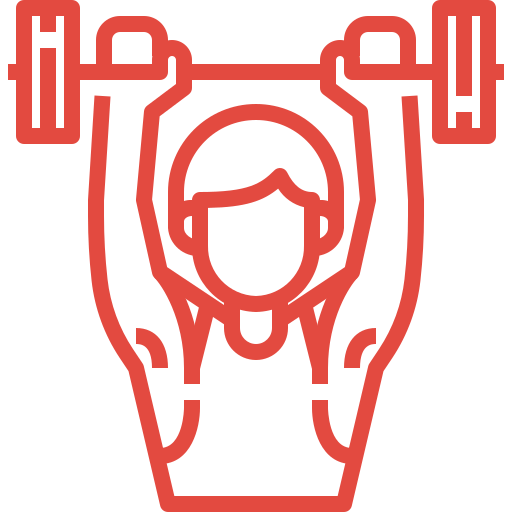Pet owners face a heart-wrenching decision when choosing between in-home and clinic euthanasia. To prioritize their pet’s comfort, dignity, and well-being, they can apply fundamental fitness principles. A fitness mindset helps set goals, track progress, and make informed decisions about their pet’s quality of life. Fitness principles can also guide end-of-life care decisions.
Key factors to consider when making this choice include the pet’s comfort level in different environments. Does your pet feel more at ease in the home or in a clinic? What are their specific needs, and which setting can best meet those needs? By considering these factors and applying a fitness mindset, pet owners can make informed decisions that honor their pet’s quality of life.
Key Takeaways
- Applying fitness principles like setting goals and tracking progress helps pet owners prioritize their pet’s comfort, dignity, and well-being in end-of-life care.
- A fitness mindset enables owners to assess their pet’s quality of life objectively, considering factors like chronic pain, mobility, and enjoyment of life.
- Consistency, patience, and adaptability in pet care help owners navigate the complexities of euthanasia with confidence and clarity.
- Fitness principles promote a nurturing environment, allowing owners to evaluate their pet’s unique needs and personality when choosing between in-home and clinic euthanasia.
- By prioritizing their pet’s quality of life, owners can make a compassionate decision that honors their bond and ensures a peaceful transition.
Embracing the End-of-Life Decision
What is the most compassionate approach when it comes to saying goodbye to our beloved pets? As pet owners, we want to guarantee that our pets’ final moments are filled with love, care, and dignity. When it comes to selecting between in-home and clinic euthanasia, it is vital to weigh what will bring us and our pets the most comfort and peace.
Choosing Between In-Home and Clinic Euthanasia for our pets can be a formidable task, but by embracing the end-of-life decision, we can make a more informed choice. In-home euthanasia allows pets to pass in the comfort of their own environment, surrounded by familiar sights and smells. On the other hand, clinic euthanasia provides a more controlled and sanitary environment, which may be beneficial for pets with specific medical needs. By evaluating our pets’ unique needs and personalities, we can make a decision that honors their life and our bond with them.
Ultimately, the most compassionate approach is one that prioritizes our pets’ quality of life and our own emotional well-being. By taking the time to reflect on our pets’ needs and our own values, we can make a decision that brings us closure and peace during a difficult time.

Understanding Pet Owner Challenges
Embracing the end-of-life decision for our pets marks the beginning of a challenging process, one that requires careful consideration of various factors. Choosing Between In-Home and Clinic Euthanasia can be overwhelming, as pet owners must weigh the pros and cons of each option while dealing with the emotional weight of saying goodbye to their beloved companion.
Some of the key challenges pet owners face when making this decision include:
- Emotional attachment: The bond between a pet and their owner can make it difficult to make objective decisions about their care.
- Lack of information: Pet owners may not fully understand the differences between in-home and clinic euthanasia, making it hard to choose the best option for their pet.
- Logistical considerations: Scheduling, transportation, and other practical concerns can add to the stress of making this decision.
Fitness Principles for Pet Care
Surprisingly, the application of fitness principles to pet care may seem unconventional at first glance, but it can actually offer valuable insights for pet owners traversing the complexities of Choosing Between In-Home and Clinic Euthanasia. Fitness principles, such as setting goals, tracking progress, and adjusting routines, can be applied to pet care to promote overall well-being. By incorporating principles like consistency, patience, and adaptability, pet owners can create a nurturing environment that supports their pet’s physical and emotional needs.
In the context of selecting Between In-Home and Clinic Euthanasia, applying fitness principles to pet care can help owners make informed decisions. For instance, monitoring a pet’s quality of life and adjusting their care routine accordingly can inform the decision to opt for in-home or clinic euthanasia. By adopting a fitness mindset, pet owners can prioritize their pet’s comfort, dignity, and overall well-being, ultimately leading to a more compassionate and informed decision-making process. By leveraging fitness principles, pet owners can navigate the complexities of Choosing Between In-Home and Clinic Euthanasia with greater confidence and clarity.
Assessing Your Pet’s Quality Life
As pet owners consider Choosing Between In-Home and Clinic Euthanasia, a critical step in the decision-making process involves evaluating their pet’s quality of life. This assessment is essential in determining the most compassionate and humane approach to their pet’s end-of-life care.
When evaluating your pet’s quality of life, consider the following key factors:
- Pain and discomfort: Is your pet experiencing chronic pain or discomfort that cannot be effectively managed with medication or other interventions?
- Mobility and functionality: Is your pet able to move around comfortably, eat, drink, and perform basic bodily functions without significant distress?
- Quality of interactions: Is your pet still able to engage in activities they enjoy, and interact with their human family members in a meaningful way?
Choosing Between In-Home and Clinic
Evaluating your pet’s quality of life is a crucial step in the decision-making process, and now, having a thorough understanding is paramount to weigh the options for their end-of-life care. Choosing between in-home and clinic euthanasia is a difficult decision, but crucial to ponder the benefits and drawbacks of each option. In-home euthanasia provides a comfortable and familiar environment for your pet, reducing stress and anxiety. On the other hand, clinic euthanasia offers access to medical professionals and equipment, guaranteeing a swift and humane process.
When choosing between in-home and clinic euthanasia, ponder your pet’s temperament, medical condition, and personal preferences. If your pet is experiencing severe pain or discomfort, clinic euthanasia may be the more humane option. However, if your pet is anxious or stressed in clinical settings, in-home euthanasia may be more suitable. Ultimately, the decision should be based on what is best for your pet’s welfare and your own emotional well-being. By carefully pondering the options, you can guarantee a peaceful and dignified passing for your beloved pet.
Frequently Asked Questions
What Are the Signs That My Pet Is Ready for Euthanasia?
Recognizing the signs of suffering is vital. Pets may be ready for euthanasia if they exhibit prolonged pain, labored breathing, incontinence, loss of appetite, or inability to perform daily functions, markedly affecting their quality of life.
Can I Be Present During the Euthanasia Procedure?
Yes, it is generally possible for pet owners to be present during the euthanasia procedure, providing emotional support and comfort to their pet in their final moments, and many veterinarians encourage and accommodate this request.
How Long Does the Euthanasia Process Typically Take?
The euthanasia process typically takes around 30 minutes to an hour, including preparation and post-procedure care, although the actual administration of the euthanizing solution usually occurs within 10-30 seconds, ensuring a peaceful and humane passage for the pet.
Will My Pet Feel Pain During the Euthanasia Process?
Regarding the pain associated with euthanasia, veterinarians guarantee a peaceful and painless experience for pets by administering a sedative prior to the procedure, followed by a barbiturate overdose, rendering the process humane and free from discomfort.
Can I Bury My Pet at Home After Euthanasia?
Regarding home burial after euthanasia, vital to check local regulations and ordinances, as laws vary. Some areas permit home burial, while others have specific requirements or prohibit it altogether, so pivotal to research and comply with local authorities.
Conclusion
The application of fitness principles to pet care facilitates informed decision-making regarding end-of-life care. By prioritizing comfort, dignity, and well-being, owners can create a nurturing environment that informs their choice between in-home and clinic euthanasia. Objective assessments of quality of life, considering factors such as pain management and mobility, enable owners to make confident and clear decisions. Ultimately, this approach empowers owners to navigate the difficult decision with clarity and compassion, ensuring a peaceful passage for their beloved pets.
Also Read: The Hidden Benefits of Fitness Retreats

